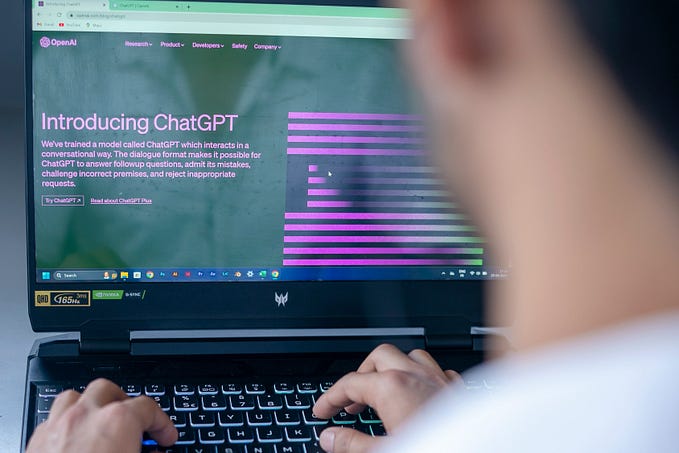The legality of an electronic bill of lading

There are plenty of occasions when someone asks about the legality and the technicalities of the electronic, blockchain-based Smart Bill of Lading, as implemented by CargoX on its CargoX Platform for Blockchain Document Transfer (BDT).
To answer this question, it is best to first outline the technical design of this global, neutral, public blockchain platform, and show how the document encryption, transfer, and global decentralized document repository work.
This article will explain the meaning of the decentralized document repository on the IPFS, document tokenization with non-fungible tokens, blockchain ownership transfer, and the legal aspects of this type of solution deployed in the global trade, shipping, and finance.
* * *
There is a stark contrast between an electronic document of title solution and a physical paper medium for transferring the title with the help of courier services.
The electronic documents — focusing on Bills of Lading alone, this can include electronic B/L, Smart B/L, blockchain B/L, and similar subtypes or synonyms — strictly separate the notion of title from the notion of content.
The old, centralized system approach
In a traditional electronic system, documents are uploaded in PDF or similar format. It is saved on persistent storage within the system, and the title of the document is recorded in its database. This is a risky endeavor, as it requires the user to put all their trust in one single entity — the owner and/or administrator of the database, who can always alter the data without anyone knowing. The electronic system — both storage and database — is usually centralized, owned by one company, and centrally managed. The documents are stored at a specific location, either on-site or in the cloud, which is also managed by a central business entity (most often Amazon Web Services, Microsoft Azure, or similar infrastructure).
The new, distributed document repository approach
With a public, neutral blockchain network, such as the public Ethereum network, things are different. CargoX Platform uses the Ethereum network to transfer document titles. Documents are uploaded and stored in a distributed file system, called the Interplanetary File System (IPFS), and encrypted with a military-grade cryptographic method. The IPFS is a protocol and peer-to-peer network for storing chunks of information — it has no central authority, and the data are replicated — securely and confidentially — between the participating nodes.
The tokenization of the document onto the blockchain
The document is hashed — a cryptographic SHA fingerprint is created — and tokenized in the next step. The platform then registers the document with a neutral, public blockchain, without a decentralized registry, and ownership of the document can be transferred using the platform’s public token ownership transfer capabilities.
How do you transfer the bill of lading on blockchain?
Talking about the Ethereum blockchain specifically, it enables users to transfer different types of tokens, representing different types of assets. When blockchain currencies — cryptocurrencies — are transferred, the tokens are of a so-called fungible type. These tokens are interchangeable — 5 tokens of this type equal 5 “other” tokens of this type, as only the quantity is important. These are the most common types of tokens exchanged — they are called ERC-20 tokens.
But for tokenized asset transfer, ownership registration, or statement — for example, documents of title — non-fungible tokens are needed. Tokens of this type represent unique assets, and they are not mutually interchangeable. This is a stark contrast to cryptocurrencies and enables a new set of functionalities on the blockchain, as well as the development of the new distributed application. These enable global applications, such as the distributed CargoX Platform for Blockchain Document Transfer (BDT).
The CargoX Platform uses ERC-721 type tokens to exchange the title of electronic bills of lading directly between users. CargoX acts merely as the transaction facilitator. Users of the platform employ their private keys to sign transactions — these transactions then transfer the tokens, and with it the title, onto the next user in the process. Transactions may be signed through the user interface by the users directly, through the API calls for direct integration into existing systems, or by interacting with the blockchain directly.
This also means that at no point in time can CargoX take over ownership of the title of the document, not even for a fraction of a second.
Users can always audit the trail of title transfers and other transactions over any publicly accessible blockchain browser — they can see the public addresses of the holders. If they have connected with the company on the CargoX Platform, they may see which company holds the title. Only users who are part of a process for a specific document may see the content of the document in the document repository — whether they currently hold it, or if they have passed the title on to the next user.
The legal aspects
In accordance with international legislation and maritime regulations, bills of lading are a private document. As such, they can be exchanged between parties in any format and style, as long as the mentioned parties agree to such exchange.
When using CargoX, the parties accept Special Terms & Conditions when they sign up on the platform. They agree that “It is expressly agreed between the Originating User and CargoX as agent for each and every Subsequent User that each and every Subsequent User, upon accepting these ST&C’s and becoming a transferee of a Smart B/L, thereupon becomes a party to the Smart B/L by novation, such Smart bill of lading evidencing the contract of carriage between the Originating User and the Subsequent Users. In accordance with clause 8 below, each Originating User and Subsequent User has accepted that, firstly, the electronic signature on the Smart Bill of lading shall have precisely the same force and effect as a manuscript or printed signature on a paper bill of lading and, secondly, the Smart B/L shall have precisely the same status and attributes as a paper bill of lading, and therefore the transfer of title and the transfer of rights and liabilities operate in precisely the same manner as if the Smart B/L were a paper bill of lading. All Users undertake not to deny these effects. Further, any third-party transacting on the basis of the Smart B/L likewise recognises and accepts that transfers of title and transfers of the parties’ rights and liabilities operate in precisely the same manner as if the Smart B/L were a paper bill of lading.”
No further contracts need to be put in place and no government regulation affects this agreement.
It is important to note that the CargoX Platform is an IGP&I clubs-approved solution and the Special Terms & Conditions are aligned with their requirements. Even so, CargoX is insured for liability in the event of disputes regarding the validity of the digital bill of lading.
Lastly, blockchain is not a new technology and has been around for over 10 years. During this time, the public blockchain’s record has been successfully tested and accepted in courts of law in several cases across the world.
National legal implications of electronic bill of lading according to ICC
To read deeper into the topic and specific national implications of using electronic Bills of Lading, we recommend reading through the International Chamber of Commerce’s document The Legal Status of Electronic Bills of Lading, published back in 2018. They establish that “The laws of most countries recognize the status of paper shipping documents in international trade, but it is not clear if the same legal status applies to the transmission of the data in electronic form.” They go on to analyze the situation in several countries, and they emphasize that it is important for states to implement the United Nations Commission on International Trade Law’s (UNCITRAL) Model Law on Electronic Transferable Records (MLETR) to speed-up the electronic document and records adoption and use.
The ICC emphasizes that “The systems that are currently best able to operate with eB/Ls are the “Club” systems, which are based on contractual arrangements agreed upon in advance between the parties. Will the law catch up with the technology so that rights and liabilities under an eB/L can be transferred without a specific contractual agreement? At present, that remains uncertain, but the adoption of the UNCITRAL model law by major trading countries would be a significant step forward.”
As a failsafe, one of the demands of the IG of P&I to receive their approval was the possibility that the Smart B/L holder demand a transition to a paper B/L. CargoX enables such a switch to a paper B/L as follows, as explained in the Special Terms & Conditions: “At any time before delivery of the goods covered by the Smart B/L, the Originating User commits, at the request of any Subsequent User being the then holder of the Smart B/L, to accept the return of the Smart B/L, destroy it, and issue a paper bill of lading in its place. The paper bill of lading shall replicate precisely the wording of the Smart B/L, together with the terms and conditions contained in and/or incorporated by reference into the Smart B/L. The paper bill of lading shall state the date of issue as per the Smart B/L, the date of the switch to paper, and (except for cases of bearer or blank endorsed bills of lading) there shall be attached to the paper bill of lading a printout of the electronic record of Subsequent Users between the date of issue and the date of the switch to paper.”
As witnessed by the case above, using a digital bill of lading is safe, secure, and legal — as long as all parties agree to such an exchange.
- Patrick Vlacic, Ph. D., maritime legal expert and former minister of transportation of Slovenia
- Bojan Cekrlic, Chief Technology Officer
* * *
We first publish content on our home page www.cargox.io, and with a short delay on Medium. This was originally published on https://cargox.io/press-releases/full/cargox-pysu-2020/
Subscribe to our news on our website to receive content like that in your mail, monthly!











